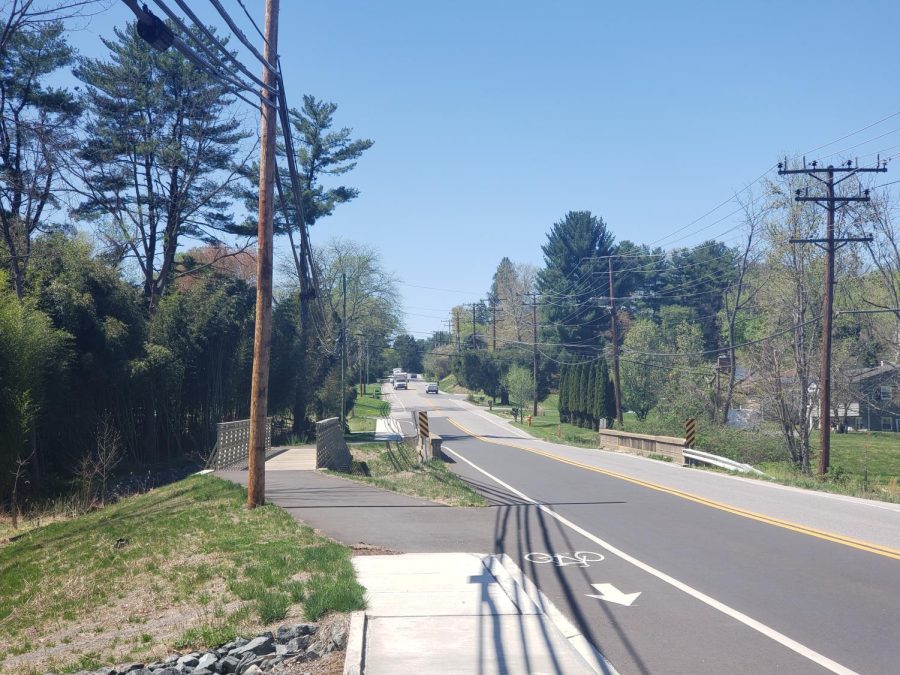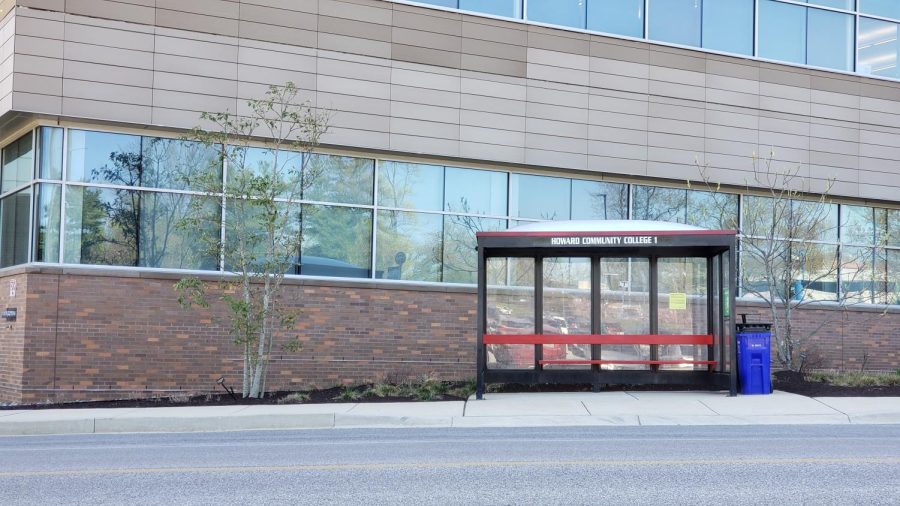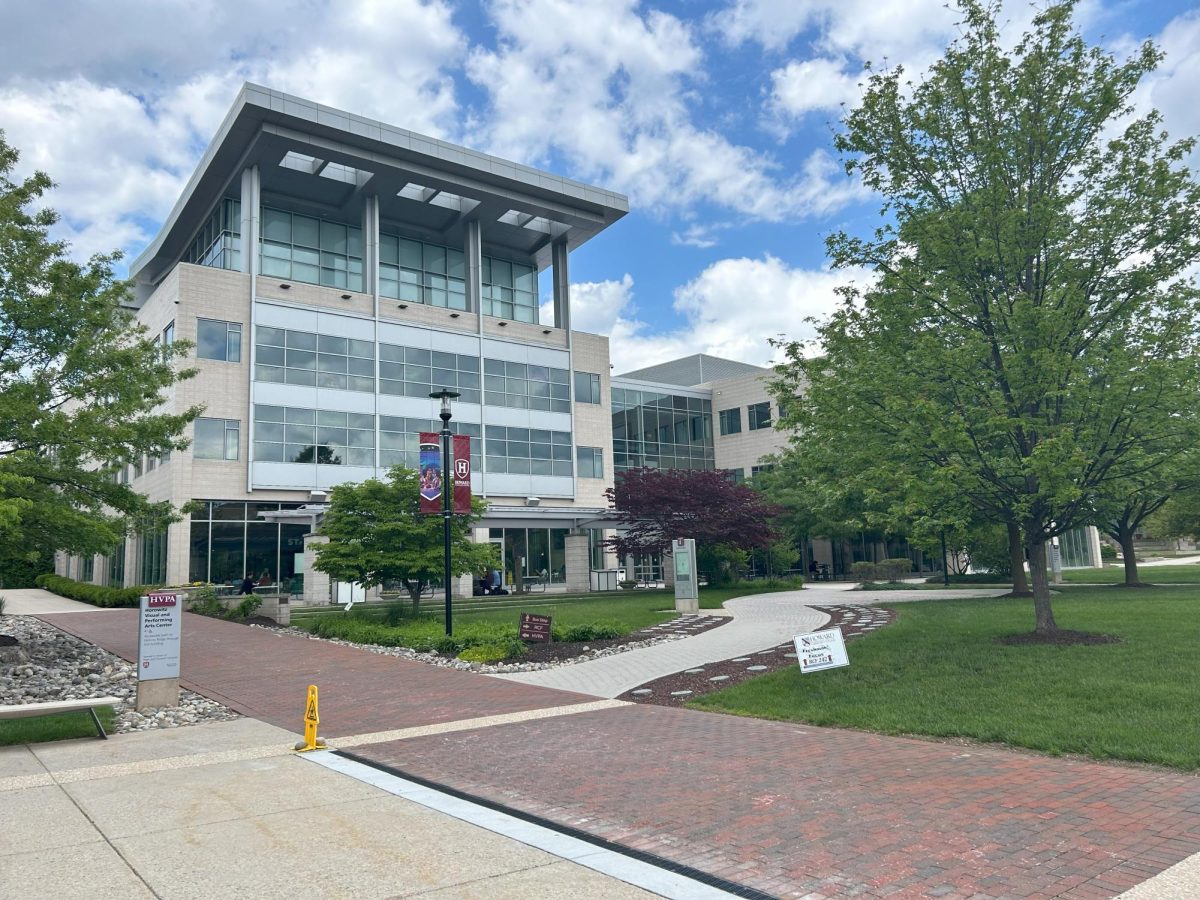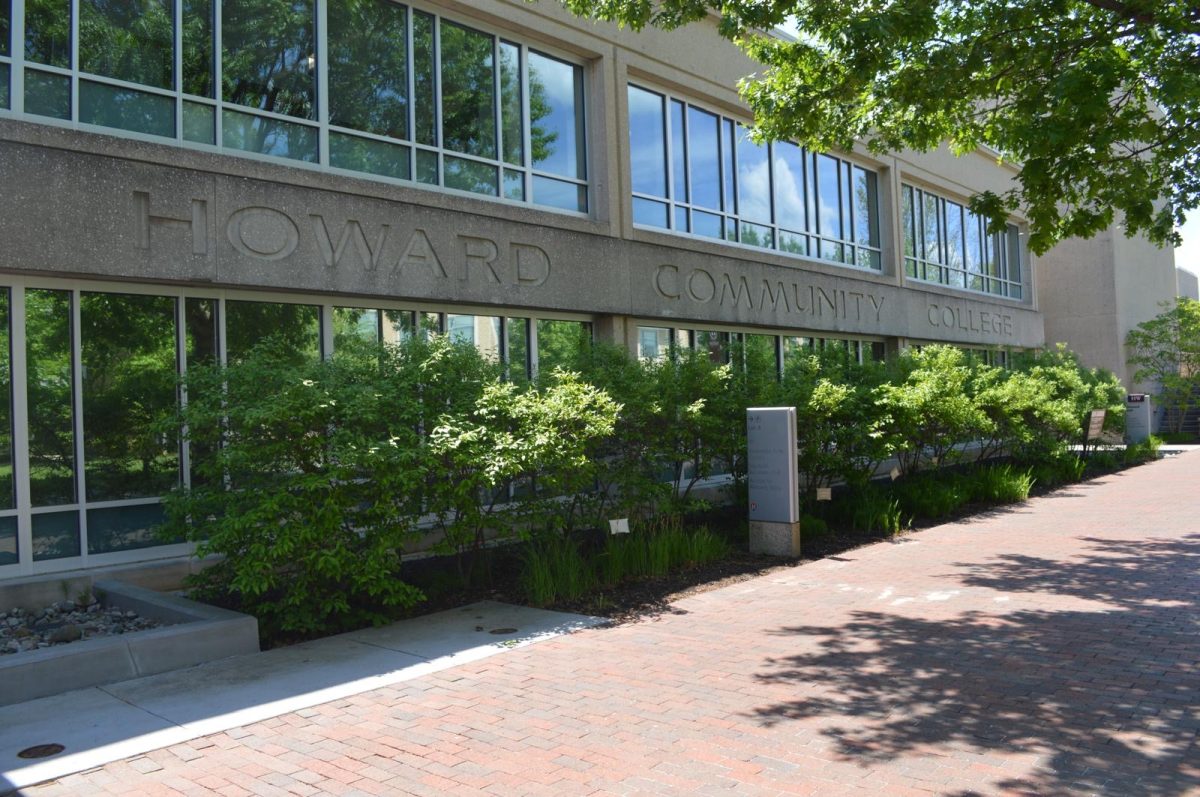Howard County Needs an Infrastructure Overhaul
It’s time that cars stop being a necessity to get around anywhere.
An RTA bus stop in front of Howard Community College’s SET building
April 24, 2023
I have a love-hate relationship with my car.
On the one hand, it’s so convenient to just crank the key and drive to where you need to go. It’s an experience to just cruise places blasting music out of the stereo. With a car, your options of where to go seem limitless.
But then you run into traffic and bad drivers and strange roadways and so on. You have to worry about repairs and replacements for it, not to mention keeping fuel on the budget with its fluctuating prices.
With my family, any time we have to go to different places at the same time, it becomes a Tower of Hanoi-like logistics operation between the cars. And don’t get me started on having to drive into cities…
But driving is something I still do. Because what other options do I have? Commuting to Howard Community College by current transit, normally a 15-minute drive, would take over an hour, requiring a walk over a usually busy road without sidewalks and 2 bus transfers.
If I were more ambitious and took transit to Baltimore’s Inner Harbor, which would be only 25 minutes by car, I’d find the trip would quintuple to over 2 hours. In some European countries, a similar ETA would let you reach a similar distance as fast as cars, if not faster.
Perhaps this is me being ungrateful, but frankly this is not the way it should be for a county right between two major cities and with a population of over 300,000. And as Howard County continues to grow, I fear for what new influx of cars in the area there will soon be. It’s time that the county, Maryland and the rest of the country stop making cars the only means of getting anywhere. A transit overhaul is long overdue.
Now why should I complain when I already have access to a car, or could maybe hail an Uber or Lyft? For one, just needing to use them less is a benefit alone. Better transit and walkability infrastructure, and more users of it, mean fewer cars on the road. That in turn means less greenhouse gas emissions on their part. And even considering the oncoming arrival of electric cars, fewer people on the road also leads to less traffic, easing the logistics of having to deal with so many drivers at once. That eases headaches for urban and regional planners, as well as for commuters who don’t need to worry as much about prices for refueling or repairing.
And although I have access to a car, how often is this the case for others? Cars are already expensive purchases on their own, and as mentioned before require plenty of upkeep and refueling. Not everyone can or wants to invest in one, and a lack of car access then limits where they can work or even live. Improved and expanded transit provides greater social mobility, as it relieves this burden of costs and allows far more opportunities to live or work practically wherever they need.
In turn, better public transit helps businesses and the economy itself. A study by the Mineta Transportation Institute from 2015 found that wider public transit would provide a net benefit to the economy, stimulating it and producing more jobs, even in rural areas. And it makes sense. Businesses would have larger access to workers and consumers, who would be able to reach these destinations more efficiently and at a far lower cost. Parks, shopping areas, communities or workplaces would be far more reachable and frequented, rather than isolated along the roads.
Howard County itself is set up very well to take advantage of all the opportunities for transit. Not only are we situated between Baltimore and D.C., but we’re also near I-70 and the corridor out to Western Maryland and beyond. Destinations like the Mall in Columbia or Old Ellicott City could reap the benefits a well-designed transit network could bring.

Now plenty of arguments can be made about making this effort at all. One of the most frequently cited factors is the cost. Some recent attempts to expand or improve public transport in the U.S. have faced cost overruns and various delays.
However, this same scrutiny could easily be applied to road expansions, which are also expensive and have faced delays, yet aren’t often discussed with the same scrutiny or at all. Surely the same money we dump into adding more lanes or new highways can be reallocated into adding rails or sidewalks. It’s an expense, yes, but it’s an expense for a public good that can help many people in the long run.
Another aspect people may bring up is that the U.S. can’t support these initiatives as well as other nations. America is almost as large as the entire continent of Europe with plenty of rural spaces. You can’t expect a bullet train to pass through every minor town, could you?
Of course not, but does this mean there aren’t places that deserve better transit? The northeast is one of the most populated regions in the country, with tens of millions of travelers. Isn’t it worth creating some means of reliable, fast transit in our neck of the woods? Howard County may not be as populated in its northwest, but that’s certainly not the case around Columbia.
I’m not looking to kill the car, as some of the harsher voices on the topic demand. Cars and trucks still have many uses, and the culture, ideas and history behind them are so embedded into our national DNA that I don’t think we or could or should kill them. But the idea that we can get by with infrastructure so focused on cars should be taken the same way as one focused on bikes or trains. People need to have more options to move from place to place, and attempting to accommodate everything for just one form of transport inevitably leads to disarray.
It appears that our current leaders recognize this. Recently elected Gov. Wes Moore promised in recent campaigns to develop Maryland’s rail infrastructure much further, such as by providing high-speed rail capacity. And an article composed by area leaders like Howard County Executive Calvin Ball and Baltimore Mayor Brandon Scott expressed their interest in improving and developing further transit features, including reviving the Red Line which was cancelled under Hogan.
While this is great, I want more immediate action, and at a far larger scale. We should support the creation of new sidewalks in every location, and more proposed transit lines like the Yellow Line, which would extend the light rail from Baltimore right into Columbia itself. And we as citizens need to not only advocate for these, but support them, including what’s already there. The RTA that manages the area has some uses, but much more could be done to extend its reach, make it more efficient and bring in more ridership, and it’s up to us to see that through.
For now, I’m stuck in this love-hate relationship with the car, as I’m sure many others are. Still, if we take the steps to move beyond it, we’ll find ourselves with many more options than ever before.







